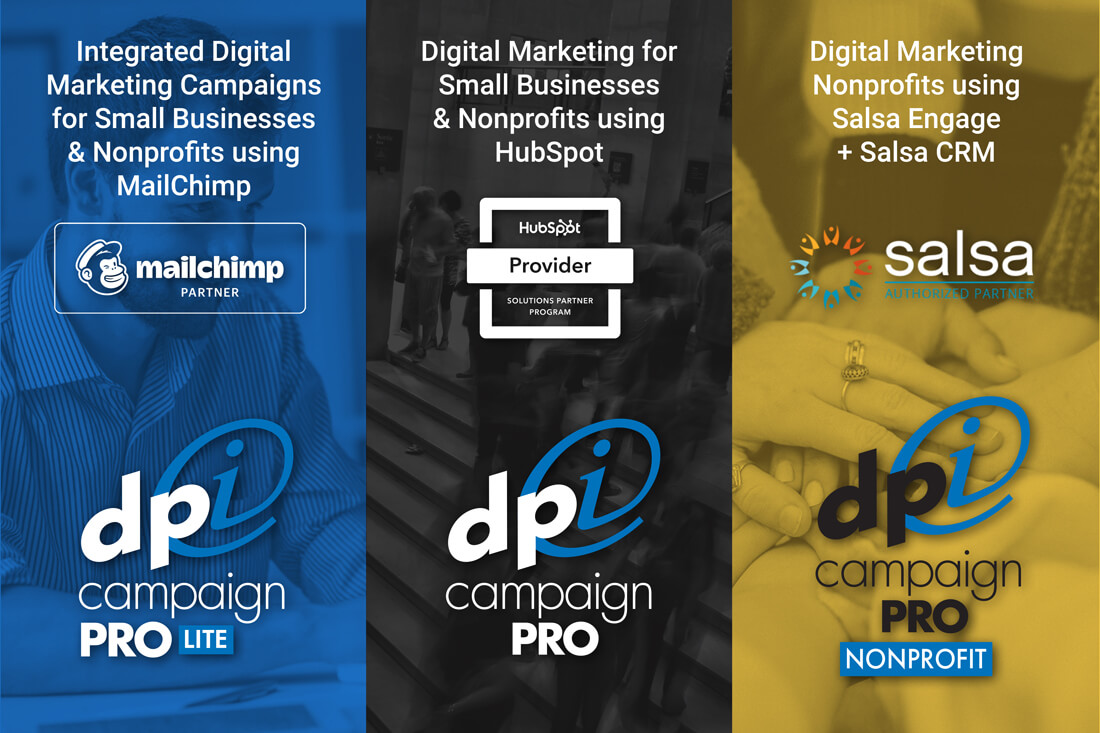Why You Need a Referral Program Marketing Strategy (and How To Create One)
If you’re like most businesses, most of your new business doesn’t come from online ads. It doesn’t come from radio or television ads either. According to the NY Times, 65% of new business comes from referrals. 65 percent. If you weren’t sold on a referral program before, you should be now. Considering over half of your new customers come from referrals, shouldn’t you have an effective marketing strategy for your referral program? Shouldn’t you have a referral program? You should. Here’s how to create one.

BUILDING A REFERRAL PROGRAM
To build a referral program, you should first know how most of your referred customers find you. It’s obvious that all referrals come by way of existing or previous customers, however, how they engage with your brand and connect with your business may not necessarily be the same way the customer that referred them did. Some may reach out by phone based on the recommendation of a friend, while others may connect via social media and establish a relationship there before going further. It’s important to know and keep track of (like in a CRM) where and how these referrals are finding you.
Once you know a bit more about your referrals, you can begin to craft a program around that knowledge. What makes a good referral? What’s an ideal customer? How much are your customers worth? You’ll want to know, too, what your cost per acquisition (CPA) is – generally, a $10 CPA is the max for referral program marketing. That is, spending no more than $10 (hopefully less) on acquiring new customers via referral, which depends also on your business, goals, etc.
Next, you’ll want to determine who your referral sources are – ideally, these will be the type of customers that you’re looking to work with. Keep in mind what who your ideal customer is and what kind of business (or nonprofit) they are. Small? Medium? Corporation? B2B or B2C? It’s good to know what your ideal customer looks like because that can help you determine who your good referral sources are. Don’t limit your referral resources to just current clients – think about past customers, friends and family, vendors and leads that never converted. Start with a broad list of referral sources and then narrow it down or segment it to show more clearly who your best opportunities are.

REACHING OUT TO YOUR REFERRAL SOURCES
As we spoke about previously in our multichannel marketing post, you’ll want to use multiple channels to reach out to your referral sources. If you know your referral source actively engages with your frequently on social media, use that to reach out to them. On the other hand, if they are more responsive to email marketing, use that medium to reach out for your referral. It’s important to note that to do this well, you need a platform (like a CRM) that let’s you know when a referral is submitted and it lets the referral know as well, as whoever refers them to you may not tell them. You should determine how you’ll accomplish this before reaching out for any referrals.
Timing is everything. Reaching out with the right content at the right time is tricky – how do you know when a referral is ready for your services? When should you reach out for a referral from your own network? A lot of research has been done regarding when is the optimal time to reach out for a referral. A post from Forbes suggests that asking right after you make the sale with a current customer is the best time to ask for a referral. HubSpot suggests that the only time you should ask for a referral is after ensuring that the customer is happy with your product or service. Is there a perfect time? Probably not. At least, not one specific time that will be best, 100% of the time.
That said, I believe customers give the best referrals when they are happy themselves with a product or service. Asking just after the sale and before they can use your product or service is too soon; while waiting months (even years) to ask for a referral after they may have forgotten the service or product your provided and how it made them feel about your business, may be too late. When to ask for a referral from a current customer really depends on the length of the project with them, the outcome, and the entire relationship. You’re more likely to get an valuable referral when your customer is happy and they trust your product or service.
WAYS TO PUBLICIZE YOUR REFERRAL PROGRAM
- Newsletters (both email and printed)
- Blog posts
- Email signatures & CTA on website
- Social Media posts
- Word-of-mouth (don’t forget this!)
- Landing page with referral program for
![]()
TRACKING, THANK YOU AND FOLLOW-UP
Tracking is a huge part of a successful referral program. If you’re not using a CRM (like HubSpot) for your referral program form, you’ll want to find a way to track your referrals, who referred them, when they were referred, if they received their referral incentive and how the referral was followed-up with (nurture, drip, etc.). Tracking this data will tell you a lot about your referral program and its success. If you’re using a CRM, it’ll even keep track of how much the referral spends with you over time, to really get an idea for how valuable the referral was and to determine your customer lifetime value (CLV).
Saying thank you for any referral (qualified or not if you’re qualifying them for incentives) is imperative. Typically, if you’re offering an incentive, such as a discount or a gift, that can help serve as part of the thank you for the referral, however, you’ll want to reach out to your referral source directly and thank them for their referral. This will also increase your trustworthiness with them and continue to keep them as a loyal customer.
Following up with referrals is also imperative, otherwise, what’s the point, right? It’s doubly important to follow-up with your new referrals soon after the referral is made. Why? Because of two reasons. First, your referral source made the referral so that you can help their friend that they referred. If you don’t follow-up soon after they referred them, they might find another solution or they might be waiting for your follow-up. Second, they were likely notified that they were referred by your referral source, so they would be expecting some sort of follow-up. If you don’t follow-up soon after the referral is made, what does that say about your business? Moral of the story: Follow-up quickly on submitted referrals.
REFERRAL PROGRAM INCENTIVE IDEAS
The most successful referral programs offer some kind of incentive for referral sources to provide quality referrals. The majority of these center around the referral source receiving some sort of gift or benefit for their submission – sometimes it’s a discount on products and services, other times it’s a monetary gift or gift card. Recently, some businesses have had success with referral programs that center around donations made in the referral source’s name. Others offer upgrades to currently subscribed to services for qualified referrals. There are a lot of different ideas out there – some of the best, tried and true incentives are:
- Discounts off a future purchase
- Free products/services
- Cash/Gift Cards
- Custom Rewards/Store Credit (based on buying history)
- Donations
- Contests & Giveaways
DISCOUNTS OFF A FUTURE PURCHASE
This is pretty self explanatory – in exchange for a qualified – meaning, the referral has to meet certain criteria before they can be a qualified lead – referral. That is, if ABC Company refers XYZ Company, and receives a 25% discount for qualified leads (a qualified lead could be that the referral must do a certain dollar amount of business), then XYZ Company would have to spend/sign up for whatever the dollar amount threshold is for ABC Company to receive the 25% off. Or, you can simply just offer a discount off a future purchase just for submitting a referral. Qualifying leads protects your business from gaming the system. This is a pretty common referral program incentive.
FREE PRODUCTS/SERVICES
This is also pretty straightforward – it can work the same way with qualifying the referral, or it can be a straight-up free product or service just for submitting the referral. Typically, any free product would be something that wouldn’t break the bank if someone submitted 10 referrals, however, if they submitted 10 referrals, it then wouldn’t be a big deal, now would it? This is also a fairly common referral program incentive as “free” resonates with just about everyone, regardless of what the offer is.
Cash/Gift Cards
Cold hard cash or a gift card, which is equally as valuable. With Visa Gift Cards being available just about everywhere, it makes a quick, easy to obtain monetary reward for a referral. Cash is always a great reward, however, if your business is small and you don’t have that kind of cash to give away, it might be a harder incentive to offer. Keep in mind too – if someone were to submit 10 referrals – or if you had 10 people submit one referral – would you have enough money on hand to pay them?
Custom Rewards/Store Credit
Much like a discount or free products/services, custom rewards or store credit can be a great incentive for someone to provide a referral. A loyalty rewards program or store credit offer really needs no upfront costs or purchases associated with it – in fact, as long as you have some system for tracking it, it shouldn’t cost you a thing until you have to pay it out, or if you have someone use store credit or rewards to pay for a purchase. Regardless, it’s a good option if you have any type of loyalty program already in place or if you have a store that can process store credits easily.
Donations
As mentioned previously, if you think that the majority of your referral sources would see a donation as a fitting incentive for a referral, go for it. Donations are a great way to do good and reward your customers for their referrals. This only works though if your customers find value in that incentive. If your referral sources don’t care about you making a donation on their behalf, then they won’t care about giving you a referral either. Be selective about using this incentive.
Contests & Giveaways
Finally, contests and giveaways are also great incentives – if the prize is big enough. Unlike discounts, free products/services, rewards/store credit, contests and giveaways are banking on the fact that what you have to give away is valuable to your referral sources. If it’s not, you’re likely to see submissions drop, and that’s not helpful. Really consider your giveaway and determine if what you’re giving away is something your referral sources are going to find valuable. If not, I would find another incentive that’s easier to use for your referral program than a contest or giveaway.
All of these incentives must be considered based on your referral sources and what they will engage with, support and ultimately take advantage of for your referral program. If you have a referral program with an incentive that your referral sources don’t find value in, then it just won’t work.
A referral program takes time to setup and it takes time to take off. Be patient but also be willing to make improvements if you find that something isn’t working or if it could be better. If you don’t have one, start looking into creating one. Referral programs can make finding new customers easy – or at least, easier. If you already have a referral program, that awesome! Hopefully some of the information in this post will help you improve it down the line.
SIGNUP FOR OUR EMAIL NEWSLETTER!






